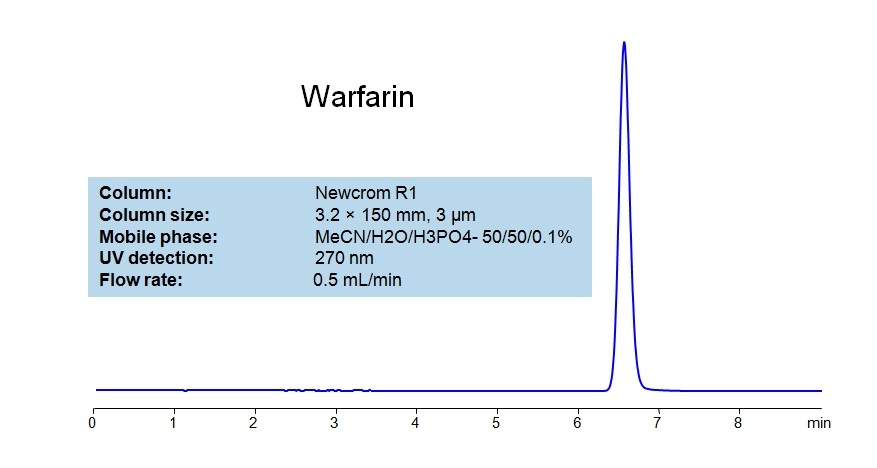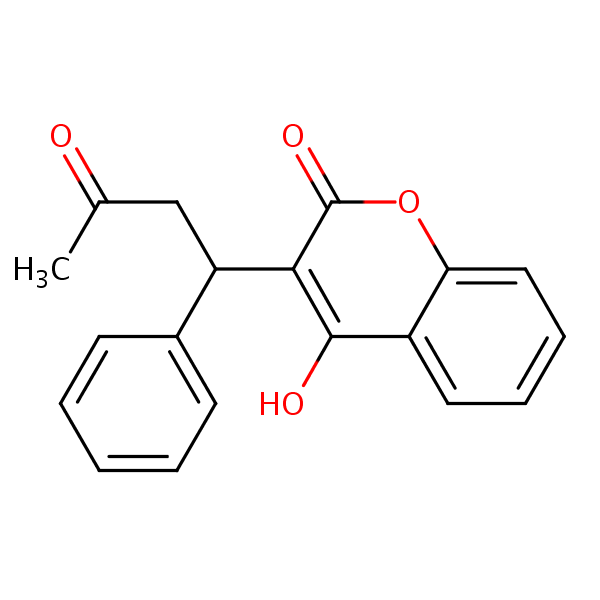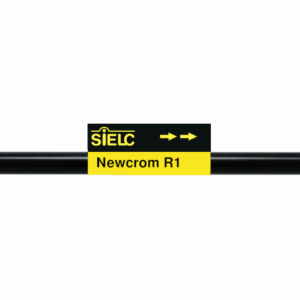| CAS Number | 81-81-2 |
|---|---|
| Molecular Formula | C19H16O4 |
| Molecular Weight | 308.334 |
| InChI Key | PJVWKTKQMONHTI-UHFFFAOYSA-N |
| LogP | 2.70 |
| Synonyms |
|
Applications:
HPLC Method for Analysis of Warfarin on Newcrom R1 Column
February 28, 2018
HPLC Method for Warfarin, Sodium warfarin on Newcrom R1 by SIELC Technologies
 High Performance Liquid Chromatography (HPLC) Method for Analysis of Warfarin, Sodium warfarin
Warfarin is a medication that is also known as “blood thinner”. It is used to treat and prevent blood clots. Blood clots can heighten the risk of a stroke or a heart attack which could be fatal. Newcrom R1, a column that takes advantage of the newest technologies, does not contain embedded acidic nor basic ionizable groups and can retain Warfarin. The method is UV compatible and can be used as a general approach for analyzing similar compounds.
High Performance Liquid Chromatography (HPLC) Method for Analysis of Warfarin, Sodium warfarin
Warfarin is a medication that is also known as “blood thinner”. It is used to treat and prevent blood clots. Blood clots can heighten the risk of a stroke or a heart attack which could be fatal. Newcrom R1, a column that takes advantage of the newest technologies, does not contain embedded acidic nor basic ionizable groups and can retain Warfarin. The method is UV compatible and can be used as a general approach for analyzing similar compounds.
| Column | Newcrom R1, 3.2 x 150 mm, 3 µm, 100 A, dual ended |
| Mobile Phase | MeCN – 50% |
| Buffer | Phosphoric Acid |
| Flow Rate | 0.5 ml/min |
| Detection | UV 270 nm |
| Class of Compounds | Medication |
| Analyzing Compounds | Warfarin, Sodium warfarin |
Application Column
Newcrom R1
Column Diameter: 3.2 mm
Column Length: 150 mm
Particle Size: 3 µm
Pore Size: 100 A
Column options: dual ended
Application Analytes:
Sodium warfarinWarfarin
Application Detection:
UV Detection
SIELC Technologies usually develops more than one method for each compound. Therefore, this particular method may not be the best available method from our portfolio for your specific application. Before you decide to implement this method in your research, please send us an email to research@sielc.com so we can ensure you get optimal results for your compound/s of interest.


